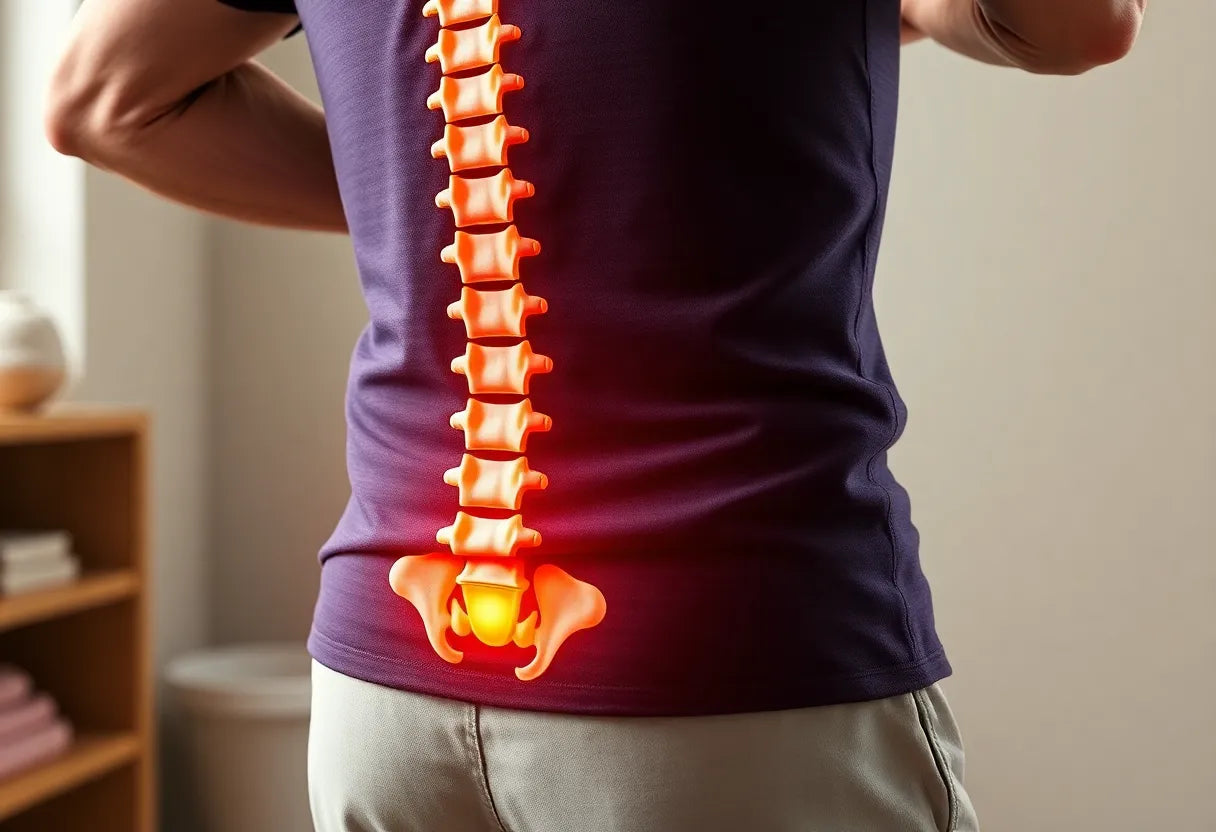Experiencing the sharp, often debilitating pain of sciatica can be a daily struggle for many individuals. Sciatica, a condition characterized by pain radiating along the path of the sciatic nerve, affects millions worldwide. This nerve, the longest in the body, runs from the lower back through the hips and buttocks and down each leg. When it becomes irritated, usually due to a herniated disk or bone spur, it can cause significant discomfort and restrict mobility. The symptoms—ranging from a mild ache to severe pain, numbness, or tingling—can disrupt daily activities and diminish quality of life.
Addressing sciatic nerve pain is crucial, not just for immediate relief but for long-term health and mobility. While medications and surgeries are options, non-invasive methods such as targeted exercises are highly recommended. These exercises can help manage and alleviate the symptoms of sciatica by reducing pressure on the nerve, improving flexibility, and strengthening supporting muscles.
The role of exercise in managing sciatica
Exercise plays a pivotal role in the management of sciatica. By incorporating specific movements into your routine, you can significantly reduce sciatic nerve irritation and promote healing. Regular exercise helps in maintaining proper posture, enhancing flexibility, and strengthening the muscles around the spine and pelvis, which are essential for supporting the lower back and reducing nerve stress.
Moreover, exercise increases blood flow to the affected area, which can help in reducing inflammation and promoting the healing process. It also releases endorphins, the body's natural painkillers, which can provide relief from chronic pain. This makes exercise a powerful tool in both preventing and managing sciatic nerve pain.
A compelling reason to start moving
Consider this: sciatica affects up to 40% of people at some point in their lives. That's a significant portion of the population dealing with this painful condition. Fortunately, incorporating simple exercises into your daily routine can offer substantial relief. Many individuals have found that with consistent practice, they can greatly improve their quality of life, gaining back mobility and reducing reliance on pain medications.
In the following sections, we'll explore some of the most effective exercises for sciatica relief, providing step-by-step guides to help you safely perform these movements at home. Whether you're dealing with mild discomfort or more severe symptoms, these exercises can be tailored to your level of pain and flexibility, offering a non-invasive path to relief and improved well-being.
common sciatic nerve exercises for relief
For those dealing with sciatica, incorporating specific exercises into your routine can provide significant relief. Let's delve into some of the most effective exercises recommended for soothing the sciatic nerve.
knee-to-chest stretch
The knee-to-chest stretch is a simple yet powerful exercise that targets the lower back and gluteal muscles, helping to relieve pressure on the sciatic nerve. Here's how to perform it:
- Lie on your back on a comfortable, flat surface.
- Bend your knees, keeping your feet flat on the floor.
- Gently bring one knee up towards your chest, using both hands to pull it closer.
- Hold the position for 20-30 seconds, feeling a stretch in your lower back and buttocks.
- Lower your leg back to the starting position and repeat with the other leg.
- Perform 2-3 sets on each side.
This stretch is beneficial for reducing tension in the lower back, which can alleviate pressure on the sciatic nerve.
piriformis stretch
The piriformis muscle, located in the buttocks, can become tight and compress the sciatic nerve. Stretching this muscle can provide relief:
- Sit on the floor with your legs extended in front of you.
- Cross your right leg over your left, placing your right foot flat on the floor.
- Place your left elbow on the outside of your right knee and gently twist your torso to the right.
- Hold the stretch for 20-30 seconds, then switch sides.
- Repeat 2-3 times on each side.
This exercise helps alleviate tension in the hip muscles, potentially reducing sciatic nerve compression.
hamstring stretches
Tight hamstrings can exacerbate sciatic pain. Here's an effective stretch to improve flexibility:
- Stand upright and place one foot on a low stool or chair.
- Keep your leg straight and gently lean forward, reaching towards your toes.
- Maintain a straight back and hold the stretch for 20-30 seconds.
- Switch legs and repeat 2-3 times on each side.
Regularly performing this stretch can enhance flexibility in the posterior thigh, reducing sciatic nerve irritation.
clamshells and glute bridges
Strengthening the hips and core is crucial for supporting the lumbar spine and reducing sciatic nerve strain. Clamshells and glute bridges are excellent exercises for this purpose:
clamshells
- Lie on your side with your legs stacked and knees bent at a 45-degree angle.
- Keep your feet together and lift your top knee as high as possible without moving your pelvis.
- Hold for a second at the top, then lower your knee back down.
- Perform 2-3 sets of 10-15 repetitions on each side.
glute bridges
- Lie on your back with your knees bent and feet flat on the floor, hip-width apart.
- Press through your heels to lift your hips towards the ceiling, squeezing your glutes at the top.
- Hold for a few seconds before lowering back down.
- Complete 2-3 sets of 10-15 repetitions.
These exercises not only support the lumbar spine but also enhance core stability, crucial for overall back health.
neural/gliding exercises
Neural or gliding exercises, such as sciatic nerve mobilization, are advanced techniques often recommended by physical therapists. These exercises focus on improving nerve movement:
- Sit upright in a chair with your feet flat on the floor.
- Extend one leg out straight, flexing your foot towards you.
- Simultaneously, tilt your head forward to add a gentle stretch along the nerve.
- Return to the starting position and repeat 10 times on each side.
These exercises are designed to enhance nerve mobility, which can be particularly beneficial in reducing sciatic pain.
therapeutic evidence supporting exercise
Clinical research underscores the effectiveness of exercise as a non-pharmaceutical method for sciatic nerve pain relief. Studies indicate that consistent exercise can improve sensory thresholds and reduce hypersensitivity. Moreover, combining neurodynamic techniques with traditional exercises may yield better outcomes in pain reduction and quality of life improvements over time.
By incorporating these exercises into your routine, you can take a proactive approach to managing sciatica, potentially reducing pain and enhancing your overall well-being.

Lumbar support belt
Provides stabilising support for lower back pain and sciatica; adjustable and suitable for daily use.
expert endorsements and personalized exercise plans
Leading academic hospitals and health authorities, such as the NHS and Cleveland Clinic, emphasize the importance of exercise as a cornerstone of non-surgical treatment for sciatica. They recommend activities like walking and swimming to maintain general mobility and support overall health. Exercise regimens should be personalized based on individual pain responses, ensuring that the chosen activities do not exacerbate symptoms.
For effective results, it is crucial to tailor exercises to your specific needs. This personalization can involve adjustments based on whether your pain decreases with flexion (bending forward) or extension (arching backward). Consulting with a healthcare professional can help identify the most suitable exercises for your condition.
practical tips for safe exercise
When engaging in exercises to soothe the sciatic nerve, safety should be a top priority. Monitoring your pain levels and adjusting exercises accordingly is essential to avoid worsening the condition. If you experience increased pain during or after exercise, it may be necessary to modify your routine or seek professional guidance.
It is also important to recognize when to seek help. If exercises do not alleviate pain or if symptoms persist or worsen, consulting a healthcare provider or physical therapist is advisable. They can provide tailored advice and possibly recommend additional treatments to complement your exercise regimen.
frequently asked questions
Is it safe to exercise with sciatic pain?
Yes, it is generally safe to exercise with sciatic pain, provided you follow safety measures and listen to your body. Begin with gentle stretches and low-impact activities, and avoid movements that cause pain. If you're uncertain, consult a healthcare professional before starting a new exercise program.
Which exercises should be avoided with sciatica?
Exercises that involve heavy lifting, twisting, or high-impact activities should be avoided as they may exacerbate symptoms. Instead, focus on low-impact exercises like walking, swimming, or cycling. Always prioritize exercises that do not increase your pain.
How often should I do these exercises?
For optimal results, perform these exercises 3-5 times a week. Consistency is key, but ensure you allow for rest and recovery. Start with shorter sessions and gradually increase duration as your comfort level improves.
Can exercise completely cure sciatica?
Exercise can significantly alleviate symptoms and improve quality of life, but it may not completely cure sciatica. It is a valuable tool for managing pain and preventing flare-ups, but underlying causes may require additional treatments.
What other treatments can complement exercise for sciatica relief?
Complementary treatments include physical therapy, chiropractic care, massage, and the use of ergonomic aids like supportive chairs. These can enhance the benefits of exercise and provide additional relief. Always consult with a healthcare provider to develop a comprehensive treatment plan.

Men's Posture Shirt™ - Black
Stimulates muscles and helps relieve back and neck pain; perfect for posture support during daily activities.
Källor
- Frontiers in Neurology. (2024). ”Exercise for Sciatic Nerve Relief.”
- PubMed. (2023). ”Sciatic Nerve Pain Management.”
- National Center for Biotechnology Information. (2023). ”Therapeutic Exercises for Sciatica.”
- HSSH Health. (2023). ”Sciatica Exercises: NHS Recommendations.”
- Harvard Health Publishing. (2023). ”Sciatica: Gentle Stretches to Help Relieve Pain and Improve Mobility.”
- Hospital for Special Surgery. (2023). ”Move Better: Sciatica Stretches.”
- Wiley Online Library. (2023). ”Neurodynamic Techniques for Sciatica.”
- Mayo Clinic. (2023). ”Sciatica: Diagnosis and Treatment.”


















